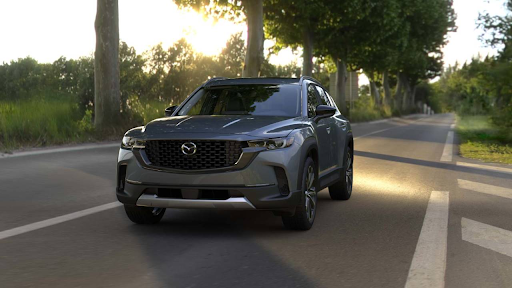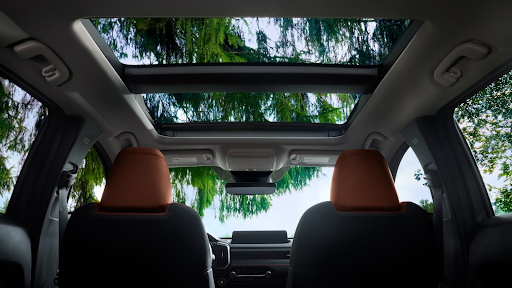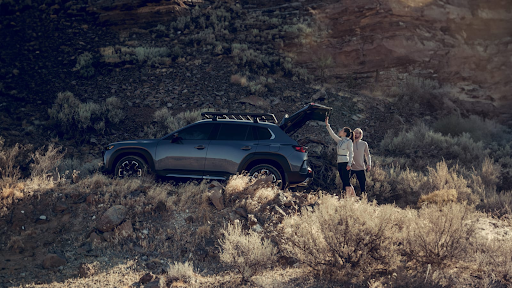
Mazda CX-50 Safety Features FAQ: Everything You Need to Know
When it comes to choosing an SUV, safety is a top priority for most buyers. The Mazda CX-50, available at Tustin Mazda, part of Patterson Autos, offers a wide array of advanced safety features designed to protect you and your passengers. Whether you're commuting in the city or exploring off the beaten path, the Mazda CX-50 is equipped with the latest Mazda safety technologies to give you peace of mind on the road. In this FAQ-style blog, we will dive into the safety features of the CX-50, exploring everything from its driver-assistance technologies to its dependable construction.
1. What are the key safety features of the Mazda CX-50?
The Mazda CX-50 comes with a comprehensive suite of safety features that help to prevent accidents and protect you in case of a collision. Some of the key safety features include:
• Mazda’s i-Activsense® safety technology, which includes:
○ Blind Spot Monitoring (BSM) with Rear Cross-Traffic Alert
○ Smart Brake Support (SBS) with Collision Warning
○ Lane Departure Warning (LDW) and Lane-Keep Assist (LKA)
○ Mazda Radar Cruise Control (MRCC) with Stop & Go functionality
○ Driver Attention Alert (DAA)
• Adaptive Front-Lighting System (AFS): Enhances visibility at night by adjusting the headlights based on steering angle and vehicle speed.
• 360-Degree View Monitor: Helps with parking and low-speed maneuvers by providing a bird’s-eye view of the car’s surroundings.
These features are designed to work together to reduce the risk of accidents and make your driving experience safer and more enjoyable.
2. How does the Blind Spot Monitoring (BSM) system work in the Mazda CX-50?
The Blind Spot Monitoring (BSM) system in the Mazda CX-50 is designed to help you avoid potential collisions during lane changes. BSM uses radar sensors located in the rear corners of the vehicle to detect other cars that may be in your blind spots.
Here’s how it works:
• When a vehicle enters your blind spot, an indicator light appears in the side mirror to warn you of the vehicle's presence.
• If you signal to change lanes while a vehicle is in your blind spot, the system will emit a warning sound to alert you not to proceed with the lane change.
This feature helps enhance your awareness of surrounding traffic and reduces the risk of lane-change accidents, making it an essential part of Mazda’s i-Activsense® technology.
3. What is Smart Brake Support, and how does it protect you in the CX-50?
Smart Brake Support (SBS) is one of the key safety features of the CX-50, and it’s designed to help prevent or mitigate collisions. SBS uses radar and cameras to detect vehicles or obstacles in front of the vehicle, and if a potential collision is detected, the system will take the following actions:
• Collision Warning: First, the system alerts the driver with an audible and visual warning if a collision is imminent.
• Automatic Braking: If the driver does not take action to avoid the collision, SBS can automatically apply the brakes to reduce the speed and potentially prevent the collision or lessen its severity.
This system is particularly useful in city driving, where sudden stops and unpredictable traffic patterns are common.
4. How does Mazda Radar Cruise Control (MRCC) work, and how does it improve highway safety?
Mazda Radar Cruise Control (MRCC) is an advanced feature that enhances both safety and convenience on the highway. Unlike traditional cruise control, MRCC can adjust your speed based on the flow of traffic.
Here’s how MRCC improves your driving experience:
• Maintains a Safe Distance: MRCC uses radar to monitor the distance between your vehicle and the one in front of you. If the vehicle ahead slows down, MRCC will automatically reduce your speed to maintain a safe following distance.
• Stop & Go Functionality: In stop-and-go traffic, MRCC can bring the vehicle to a complete stop if necessary and resume once traffic begins to move again, reducing driver fatigue.
By automatically adjusting your speed based on traffic conditions, MRCC makes highway driving safer and more comfortable, allowing you to focus more on the road ahead.

5. How does the Lane Departure Warning and Lane-Keep Assist system help prevent accidents?
Lane Departure Warning (LDW) and Lane-Keep Assist (LKA) are designed to help drivers stay in their lane, reducing the risk of unintentional lane drifting—a common cause of highway accidents.
• Lane Departure Warning: If the system detects that your vehicle is unintentionally drifting out of its lane (without the use of a turn signal), it will alert you with an audible warning and a visual cue.
• Lane-Keep Assist: If the vehicle continues to drift after the warning, LKA will gently apply steering corrections to guide the vehicle back into its lane.
These features are especially useful during long drives, where fatigue or distractions may cause a driver to lose focus.
6. How does the Driver Attention Alert (DAA) system work in the CX-50?
Long drives or distractions can lead to fatigue, which is a common cause of accidents. The Driver Attention Alert (DAA) system in the Mazda CX-50 is designed to monitor your driving behavior and detect signs of drowsiness or inattention.
Here’s how DAA works:
• The system monitors inputs such as steering, acceleration, and braking patterns.
• If the system detects changes in these patterns that suggest fatigue or inattention, it will issue an alert recommending that the driver take a break.
This proactive safety feature helps reduce the likelihood of accidents caused by driver fatigue, making it a valuable part of Mazda’s i-Activsense® safety suite.
7. What is the 360-Degree View Monitor, and how does it help with parking?
The 360-Degree View Monitor is a feature in the Mazda CX-50 that provides a bird’s-eye view of the vehicle’s surroundings, making parking and low-speed maneuvers easier and safer.
Here’s how it helps:
• Multiple Camera Angles: The system uses cameras placed around the vehicle to display a full view of the area surrounding the car, including hard-to-see spots.
• Parking Assistance: This feature is especially useful for parking in tight spaces or crowded areas, helping to avoid obstacles that may not be visible from the driver's seat.
With the 360-Degree View Monitor, parking becomes less stressful, and you can confidently navigate even the most challenging spaces.
8. How does the Adaptive Front-Lighting System improve visibility at night?
The Adaptive Front-Lighting System (AFS) in the Mazda CX-50 enhances nighttime driving by adjusting the direction of the headlights based on the vehicle’s speed and steering angle.
Here’s how AFS works:
• When turning corners, AFS adjusts the headlights to follow the direction of the vehicle, improving visibility on curves and turns.
• At higher speeds, the headlights are adjusted to project further, providing better visibility on highways.
AFS helps you see obstacles and pedestrians more clearly at night, reducing the risk of accidents in low-visibility conditions.

9. How does Mazda ensure the CX-50’s safety in case of a collision?
Mazda is known for building vehicles with dependability in mind, and the CX-50 is designed to protect occupants in case of a collision. The vehicle's body structure is reinforced with high-strength materials to absorb and distribute impact forces, reducing the risk of injury.
The Mazda CX-50 is also equipped with advanced airbag systems, including front, side, and curtain airbags, providing comprehensive protection for all passengers in the event of a collision.
10. How does Traffic Sign Recognition (TSR) enhance safety in the Mazda CX-50?
The Traffic Sign Recognition (TSR) feature in the Mazda CX-50 adds another layer of safety by helping drivers stay aware of important road signs, such as speed limits, stop signs, and other regulatory signs.
Here’s how TSR works:
• Real-Time Sign Detection: Using a forward-facing camera, TSR detects road signs as you drive and displays them on the Active Driving Display or the instrument cluster.
• Speed Alerts: If you exceed the posted speed limit, the system can provide a visual and audible warning, helping you adjust your speed accordingly.
This feature helps prevent unintentional speeding and ensures that drivers remain informed of changing road conditions, enhancing overall road safety and reducing the risk of traffic violations.
Conclusion
The Mazda CX-50 offers a wide array of advanced safety features that make it one of the safest and most reliable vehicles in its class. From i-Activsense® technology to its advanced driver-assistance systems, the CX-50 ensures that you and your passengers are protected at every turn. Visit Tustin Mazda, part of Patterson Autos, to explore the Mazda CX-50 and experience these innovative safety features firsthand.